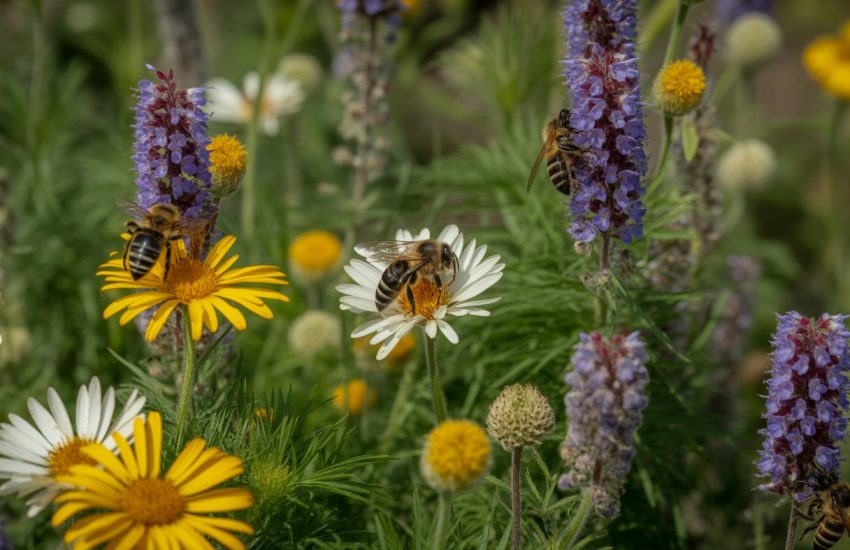Zone 5 Fig Tree: Growing Tips and Care Guide
Zone 5 fig trees are a popular choice among gardeners who live in areas with colder climates. These trees are known for their ability to withstand harsh winter temperatures and still produce a bountiful crop of sweet, juicy figs. While fig trees are typically associated with warmer regions, the hardy nature of zone 5 fig trees allows gardeners to enjoy the delicious fruit even in areas where winters are long and cold.

One of the key factors that make zone 5 fig trees so resilient is their ability to go dormant during the winter months. This means that the tree essentially shuts down and stops growing, conserving its energy until the warmer weather returns. Additionally, zone 5 fig trees are known for their ability to produce fruit on new growth, which means that even if the winter weather damages some of the tree’s branches, it can still produce a crop the following year. With proper care and attention, zone 5 fig trees can thrive and provide a bounty of delicious fruit for years to come.
Selecting Fig Varieties for Zone 5

Understanding Zone 5 Climates
Zone 5 is characterized by cold, harsh winters with temperatures that can drop to -20°F (-29°C). This makes it a challenging climate for growing fig trees, which are typically associated with warmer regions. However, with the right selection of hardy fig varieties, it is possible to grow figs in Zone 5.
Top Hardy Fig Cultivars
When selecting fig varieties for Zone 5, it is important to choose cold-hardy cultivars that can withstand the harsh winter conditions. Here are some of the top hardy fig cultivars that are suitable for Zone 5:
Brown Turkey
Brown Turkey is a popular fig variety that is known for its sweet, juicy fruit. It is a hardy variety that can survive temperatures as low as 10°F (-12°C), making it a good choice for Zone 5.
Celeste
Celeste is another hardy fig variety that is well-suited for Zone 5. It produces small to medium-sized fruit with a sweet, rich flavor. It can tolerate temperatures as low as 0°F (-18°C).
Hardy Chicago
Hardy Chicago, also known as Ficus carica ‘Chicago Hardy’, is a cold-hardy fig variety that can survive temperatures as low as -10°F (-23°C). It produces medium-sized fruit with a sweet, rich flavor.
Sugar Fig
Sugar fig is a cold-hardy variety that produces small to medium-sized fruit with a sweet, honey-like flavor. It can tolerate temperatures as low as 0°F (-18°C), making it a good choice for Zone 5.
Violette de Bordeaux
Violette de Bordeaux is a hardy fig variety that produces small to medium-sized fruit with a rich, sweet flavor. It can survive temperatures as low as 5°F (-15°C), making it a good choice for Zone 5.
In conclusion, growing fig trees in Zone 5 is possible with the right selection of hardy varieties. Brown Turkey, Celeste, Hardy Chicago, Sugar Fig, and Violette de Bordeaux are all excellent choices for cold-hardy figs. By selecting the right cultivar and providing proper care, fig growers in Zone 5 can enjoy a bountiful harvest of delicious, homegrown figs.
Cultivation and Care
Planting and Site Selection
When it comes to planting a fig tree, gardeners should choose a site that receives full sun and has well-draining soil. Fig trees prefer loamy soil with plenty of organic matter, so adding compost to the soil before planting can be beneficial. The pH of the soil should be between 6.0 and 6.5 for optimal growth. In USDA Zone 5, fig trees can be grown in containers and overwintered in a garage or other sheltered structures.
Maintenance and Protection
Fig trees are relatively low maintenance, but they do require some care to thrive. Gardeners should water their fig trees regularly, especially during hot summers, and fertilize them in late winter or early spring. Mulching around the base of the tree can help retain moisture and prevent weed growth. Fig trees are generally pest and disease resistant, but aphids and root rot can be a problem in some cases. Gardeners should monitor their trees for signs of disease or pests and take appropriate action if necessary.
Pruning and Harvesting
Pruning is an important part of fig tree care, and it should be done in late winter or early spring before new growth appears. Gardeners should remove any dead or diseased wood and thin out any crossing branches to promote airflow and fruit production. Fig trees produce fruit on new growth, so pruning can help stimulate abundant fruit production. Harvesting should be done in late summer or early fall when the figs are ripe. Figs should be picked when they are soft to the touch and have a rich flavor. Fig trees are self-pollinating, so pollination is not a concern for gardeners.
Overall, fig trees are adaptable and resilient, making them a great choice for colder climates like USDA Zone 5. With proper care and site selection, gardeners can enjoy abundant fruit and a beautiful addition to their garden.


